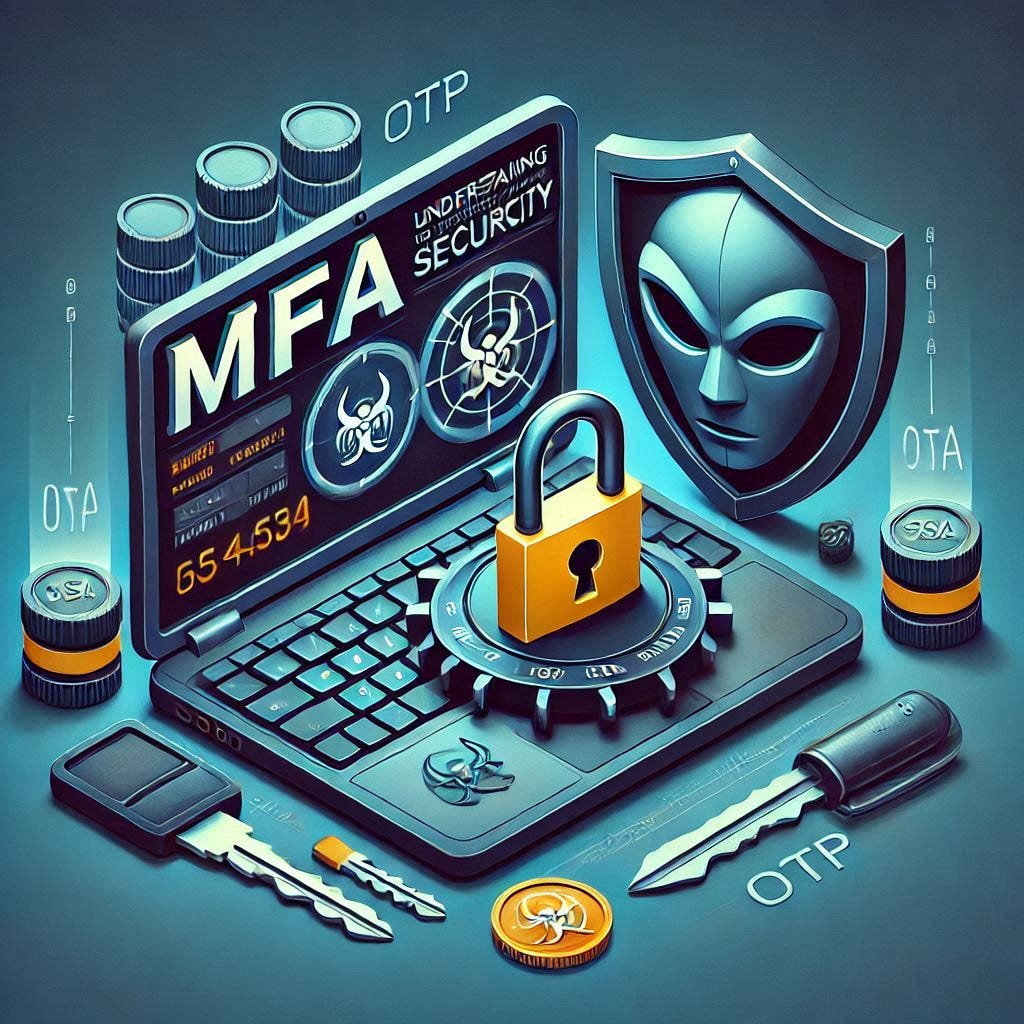MFA vs OTP: Understanding the Differences and Enhancing Security
Two concepts often come to the forefront: Multi-Factor Authentication (MFA) and One-Time Passwords (OTPs). While both are crucial tools in protecting user identities and data, they serve different purposes and offer varying levels of security. Here’s a detailed look at the differences between MFA and OTP, and how they can be used to fortify digital defenses.
What is Multi-Factor Authentication (MFA)?
MFA is a security process that requires individuals to provide more than one method of identification from separate categories to verify their identity. These categories typically include:
Something the user knows: Such as a password or security questions.
Something the user has: Like a security token, a mobile device, or an authenticator app.
Something the user is: Biometric data such as fingerprints, facial recognition, or voice recognition.
MFA can involve two or more of these factors, making it a highly customizable and robust security solution. For instance, a financial institution might use a combination of a password, a hardware token, and biometric data for system administrators, while regular employees might use a password and an OTP.
What are One-Time Passwords (OTPs)?
OTPs are a form of MFA that involve generating a unique, time-sensitive password for each authentication attempt. OTPs fall under the category of "something the user has," typically sent to a user's mobile device via SMS or generated by an authenticator app.There are two main types of OTPs:
Time-Based OTP (TOTP): This method relies on the current time to generate the OTP. TOTPs are commonly used in authenticator apps and have a time step, usually 30 or 60 seconds, after which the code expires.
Hash-Based OTP (HOTP): This method uses a counter value that increments with each use to generate the OTP. HOTPs are less dependent on time but require synchronization between the client and server.
Key Differences Between MFA and OTP
1. Scope and Flexibility
MFA is a broader concept that encompasses multiple authentication factors, including but not limited to OTPs. It offers greater flexibility in terms of the types and number of authentication factors that can be implemented. This allows organizations to tailor their security measures based on their specific needs and risk profiles. In contrast, OTPs are a specific type of MFA that focuses on using a one-time password as an additional authentication factor.
2. Security Level
MFA, by its nature, is generally more secure than using OTPs alone because it can involve multiple layers of authentication. However, the security level of both MFA and OTPs depends on the specific factors chosen and their implementation. For example, using an OTP via SMS is less secure than using an authenticator app due to the risk of SIM-swapping and SMS interception.
3. User Experience
OTPs, particularly those sent via SMS, are often more convenient for users as they do not require additional hardware or complex setup. However, this convenience comes at the cost of reduced security. MFA, on the other hand, can add extra steps to the login process, which may be perceived as less user-friendly but significantly enhances security.
Practical Use Cases
MFA
Enterprise Security: Large enterprises can implement MFA with multiple factors such as passwords, hardware tokens, and biometric data to protect sensitive data and systems.
Role-Based Access: Different user roles can have different MFA requirements. For example, system administrators might require three-factor authentication, while regular employees might use two-factor authentication.
OTPs
Customer Authentication: OTPs sent via SMS or generated by authenticator apps are commonly used for customer authentication in banking, e-commerce, and other online services.
Network Access: OTPs can be used in conjunction with passwords to secure access to network devices and systems, such as in the case of RADIUS UNIX DB + OTP implementations.
Best Practices for Implementation
MFA
Customization: Tailor MFA policies to the specific needs of your organization, considering factors like user roles, data sensitivity, and threat profiles.
Layered Security: Implement multiple layers of authentication to ensure that even if one factor is compromised, the others can still protect the user's identity.
OTPs
Authenticator Apps: Prefer using authenticator apps over SMS-based OTPs to avoid vulnerabilities like SIM-swapping and SMS interception.
Time Synchronization: For TOTPs, ensure that the client and server clocks are synchronized to avoid time-drift issues.
Conclusion
Both MFA and OTPs are essential tools in the fight against cyber threats, but they serve different purposes and offer different levels of security. MFA provides a robust and customizable security solution by requiring multiple authentication factors, while OTPs offer a convenient and additional layer of security as part of an MFA strategy.By understanding the differences and strengths of each, organizations can implement a comprehensive security framework that balances security and user convenience, ultimately fortifying their digital defenses against unauthorized access.


